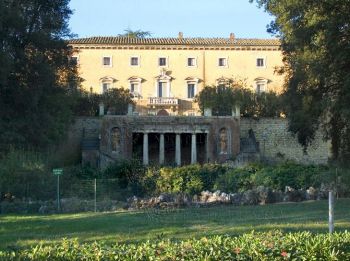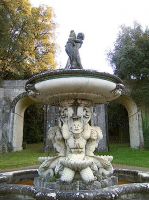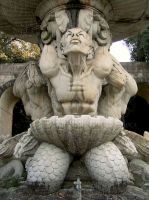Villa Chigi Saracini
Castelnuovo Berardenga is located in the extreme south of the Chianti area, in the Ombrone valley, near Sienna. Originally all of this area was a possession of the Ugurgeri della Berardenga and the castle was built by Siena as a part of a string of defensive strongholds around its territory. In 1511 the castle was given to Belisario Bulgarini and then to Bellormanti family. It then became a possession of Cosimo I, the first Grand Duke of Tuscany. After the defeat of Siena in 1555, the defensive perimeter was mostly destroyed. The Villa Chigi Saracini represents the ancient central core of the primitive defensive design. It is a stately building surrounded by a marvelous park and situated on a hill-top overlooking the town.
The Villa Chigi Saracini was designed in the early 19 C by its owner, Galgano Saracini, and stands at the entrance to the Castelnuovo Berardenga. Its construction led to a radical alteration of the urban layout of Castelnuovo Berardenga, with the demolition of the enceinte around the castle and its replacement by a retaining wall. The building is rectangular in plan and spreads over three floors, the lower portion being rusticated and the upper floors finished in plaster. The main elevations have two rounded-arch doorways, flanked by double pilaster strips terminating in corbels that support the balconies above. There is a crest on the front and the rear of the building: the one on the side facing north is that of the Chigi Della Rovere, the one on the south side is that of the Saracini Marescotti.
The romantic-style park was created by Agostino Fantastici in 1834, as were the architectural features: the triple-arch bridge (designed for carriages to pass over) linking the villa to the San Quirico hill, and the Kaffeehaus. The front of the villa, where Fantastici concentrated most of his efforts, consists of a lawn with a small ornamental lake with mossy spongestone banks, opposite which the Kaffeehaus stands. This house, Neoclassical in style, divides the park from the small Italian-style garden in the area in front of the villa, which has a geometrical arrangement of box hedges and flower-beds. One side of the regularly-shaped building has four travertine doric columns supporting an entablature, on either side of which are niches containing terracotta statues of Flora and Artemis. The building is connected to the upper garden by a double flight of steps with balustrade.
The park has many types of tree and shrub, grouped together according to the different shades of green of their foliage (plane trees, beech trees, lime trees, cedars, holm oaks and laurels). In the late 19 C and early 20 C, the park was enhanced by Count Guido Saracini, a musician and the founder of the Accademia Musicale Chigiana, who introduced a series of statues dedicated to great musicians. A column was placed in the circular piazzale, or forecourt, as a monument to Michelangelo, a work by Siennese sculptor Tito Sarrocchi, who gave his name to the piazzale itself. A large twin-basin marble fountain, also designed by Sarrocchi, was installed in another forecourt that is embellished with flowers and situated between the bridge and the park's entrance gate. A small nymphaeum, semi-circular in shape, stands beneath the entrance forecourt, along the avenue leading to Sarrocchi's fountain, and is reached by a short flight of travertine steps. Another interesting feature of the park is its complex system of avenues and winding paths running up and down the hilly terrain.
The park has many types of tree and shrub, grouped together according to the different shades of green of their foliage (plane trees, beech trees, lime trees, cedars, holm oaks and laurels). In the late 19 C and early 20 C, the park was enhanced by Count Guido Saracini, a musician and the founder of the Accademia Musicale Chigiana, who introduced a series of statues dedicated to great musicians. A column was placed in the circular piazzale, or forecourt, as a monument to Michelangelo, a work by Siennese sculptor Tito Sarrocchi, who gave his name to the piazzale itself. A large twin-basin marble fountain, also designed by Sarrocchi, was installed in another forecourt that is embellished with flowers and situated between the bridge and the park's entrance gate. A small nymphaeum, semi-circular in shape, stands beneath the entrance forecourt, along the avenue leading to Sarrocchi's fountain, and is reached by a short flight of travertine steps. Another interesting feature of the park is its complex system of avenues and winding paths running up and down the hilly terrain.




